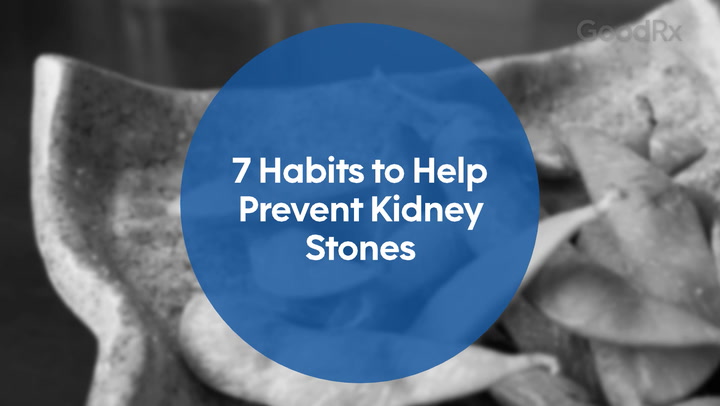9 Examples of Ultra-Processed Foods — and How They Differ From Less Processed Options
Key takeaways:
Most foods go through some level of processing. The most heavily processed foods are categorized as “ultra-processed” foods.
Ultra-processed foods are tasty, cheap, and convenient. Unfortunately, most are high in salt, sugar, fat, and additives.
Candy, soda, and flavored potato chips are examples of ultra-processed foods with the most additives. Eating too many of these foods has been linked to heart disease and cancer.
Table of contents

With bright, appealing packaging and flavors that make you want to keep eating, ultra-processed foods are cheap and easy to access. But adults in the U.S. eat too many of them. This is concerning because a diet high in processed foods increases the risk of many chronic health conditions.
But some processed foods are worse for you than others. Read on to learn about different types of processed foods and which ones you should avoid.
What are ultra-processed foods?
Ultra-processed foods are made using industrial machines and many additives, changing them from their natural state. The goal with ultra-processing is to create ready-to-eat foods that taste good, have a long shelf life, and are inexpensive.
As a result, ultra-processed foods tend to contain:
Preservatives to extend shelf-life
Other additives to add coloring, flavoring, or to change its texture
High amounts of calories from excess fat and/or sugar
Unhealthy fat, such as saturated fat or trans fat (Trans fats are banned in foods made in the U.S. but may still be found in imported foods.)
Added sugars, including high fructose corn syrup, which is linked to an increased risk of heart disease and Type 2 diabetes
9 examples of the most heavily processed foods
Some ultra-processed foods contain valuable nutrients. For example, hamburgers and flavored yogurt provide protein. But most ultra-processed foods have zero or very few beneficial nutrients.
What are ultra-processed foods, and should you avoid them? Ultra-processed foods like candy, soda, and chips are linked to heart disease, diabetes, and more. It’s best to eat them sparingly.
What does “processed food” actually mean? Processed food is any food that has been changed in some way, like being canned, dried, or fermented. But not all processed foods are bad for you.
What’s the link between ultra-processed foods and mental health? Learn how ultra-processed foods may raise your risk for dementia, depression, and anxiety.
Here are 9 examples of ultra-processed foods that you should try to limit or avoid. These foods contain high amounts of additives and don’t provide any nutrition:
Flavored potato chips are often made from dried potato flakes and many additives.
Soda contains either high-fructose corn syrup, sugar, or artificial sweeteners. Most soda also contains artificial colors and flavors.
Candy is a mix of sugar, artificial color, and artificial flavor.
Packaged baked goods such as snack cakes and cookies contain processed flour, sugar, and oil. To keep their shape and shelf life, they also have preservatives and gums.
Chocolate bars are usually high in both sugar and saturated fat. Many also have refined flour and artificial flavors.
Instant ramen is made from refined white flour noodles. The flavor packet is high in sodium, artificial flavor, and gums. Other instant pasta packages tend to be highly processed as well.
Pretzels are very high in sodium and are made with refined white flour. They are pressed by machines into their twisted shape.
Fruit drinks without real fruit are mostly made of sugar and water. They contain artificial color and flavor.
Processed meats — including hot dogs, lunch meat, bacon, jerky, sausages, and pepperoni — contain preservatives and chemicals linked to cancer.
Note that ingredients and processing levels can vary by brand.
Read more like this
Explore these related articles, suggested for readers like you.
Are breakfast cereals ultra-processed?
You may notice that breakfast cereals aren’t included in the list above. That’s because some ultra-processed cereals have valuable nutrients. But many are high in sugar, salt, and artificial colors. Whether a cereal is a healthy choice depends on its ingredients.
Your best bet is to choose a cereal that:
Is made from whole grains or bran
Has at least 3 g of fiber per 30 g serving
Has less than 6 g of sugar per 30 g serving
Doesn’t contain artificial colors
Is enriched with vitamins and minerals, such as iron and B vitamins
How to check labels and spot ultra-processed foods
Here are some ingredients you’re likely to find on the label of ultra-processed foods.
Sugar
Added sugars may go by many different names, including:
Brown sugar
Cane sugar
Date sugar
Evaporated cane juice
Coconut palm sugar
High-fructose corn syrup
Agave syrup
Barley malt syrup
Honey
Maple syrup
Artificial sweeteners and sugar alcohols
Many processed foods use artificial sweeteners and sugar alcohols to add sweetness to foods without adding any calories. You might see ingredients like:
Aspartame
Sucralose
Acesulfame potassium (Ace-K)
Saccharin
Maltitol
Isomalt
Mannitol
Sorbitol
Xylitol
Sodium
Sodium is found in these additives:
Sodium benzoate
Sodium phosphate
Disodium guanylate
Calcium Disodium EDTA
Artificial flavors or colors
You may see these listed as:
Yellow 5
Yellow 6
FD&C Blue 1
Green 3
Orange B
Emulsifiers and thickeners
These additives may go by the names:
Carrageenan
Guar gum
Gum acacia
Polysorbate 80
Methylcellulose
Starches
These products are used to thicken foods:
Maltodextrin
Modified food starch
Corn starch
Potato starch
Other telltale signs of ultra-processed foods are:
A fabricated shape, such as nuggets, sticks, or distinctively shaped cookies or crackers
A long shelf life
A spot in the snack aisle, near salty snacks, candy, and packaged pastries
What health conditions are linked to ultra-processed foods?
A diet high in ultra-processed foods is linked to several health conditions, including:
A larger body size or BMI over 30
Cancer
Heart disease
Type 2 diabetes
Mental health conditions like dementia, depression, anxiety, and attention-deficit hyperactivity disorder (ADHD) in children
High blood pressure
Eating ultra-processed products once in a while isn’t going to cause immediate harm to your health. What matters most is your overall diet over time. If you mostly eat a balanced diet with plenty of whole foods like the following, then eating ultra-processed foods occasionally is less likely to impact your health:
Fruits
Vegetables
Whole grains
Lean protein
Healthy fats
Ultra-processed vs. processed food
What is processed food, and how is it different from ultra-processed food? The difference comes down to the amount and type of modifications that have been made to the food.
Processed food is any food that has undergone some level of change from its natural state. Most foods are processed in some way, and not all forms of processing are bad. For example, many forms of processing help preserve food or make it safer to eat, such as:
Fermenting
Freezing
Pasteurizing
Canning
Dehydrating
Minimally-processed foods have a shorter ingredient list than ultra-processed foods. For example, canned tuna with oil and salt is considered processed. But this process preserves its nutritional value.
The chart below explains how to tell if a food is processed or ultra-processed.
Processed food | Ultra-processed food | |
|---|---|---|
Level of processing | Single process, like turning whole grain flour into bread | Multiple processing steps, like turning cheese into powder, and then creating cheese puffs |
Appearance | Looks similar to how it appears in nature, such as salted nuts | Mostly unrecognizable from natural foods because they’re a different color, texture, or shape (like O-shaped or flaked breakfast cereals or dinosaur-shaped nuggets) |
Type of ingredients | Basic whole foods with a small amount of sugar, oil, or salt | Ingredients include emulsifiers, preservatives, or artificial colors |
What are examples of minimally processed foods?
Some nutrient-rich processed foods include:
Canned tuna, salmon, and sardines
Canned vegetables and fruit
Salted nuts and seeds
Dairy products like milk, yogurt, and cheese
Artisan or sourdough bread
Canned beans and lentils
Tofu
Pasta
Note that minimally processed foods can still contain some salt, sugar, or oil. They’re still better for your health than ultra-processed foods.
Frequently asked questions
Peanut butter is usually a whole or minimally processed food, depending on the ingredients used. Peanut butter made from just peanuts is a whole food. Peanut butter with a small amount of salt, sugar, or oil is minimally processed. Peanut butter that contains swirls of jelly, marshmallow, or chocolate is considered ultra-processed.
Oats are a nutritious whole grain. Plain steel-cut, old-fashioned, or rolled oats aren’t ultra-processed foods. Oats with a bit of added sugar, salt, or cinnamon are minimally processed. But oats with added ingredients like chicory root extract, natural and artificial flavor, and soy lecithin are ultra-processed. If they have maltodextrin or magnesium stearate they’re also ultra-processed.
Your energy levels are the result of all of the foods you eat, not one single meal. If you regularly eat a diet high in ultra-processed foods, you may feel tired and sluggish. That’s because these foods are low in vitamins, minerals, and protein. So, this kind of diet may lead to nutrient deficiencies.
The bottom line
Ultra-processed foods are designed to taste good, cost very little, and last a long time. But they’re also usually high in salt, sugar, fat, and/or additives. Eating too many of these foods is linked to heart disease, cancer, and other health conditions. The most heavily processed foods include candy, potato chips, and soda. It’s best to steer clear of these and other ultra-processed foods as much as you can. But you don’t need to avoid processed foods altogether. Many healthy foods are minimally processed — such as yogurt, frozen vegetables, or canned fish — and provide both nutrients and convenience.
Why trust our experts?



References
Berg, S. (2024). What doctors wish patients knew about ultraprocessed foods. American Medical Association.
Bhattacharya, S. (2023). Potato flakes. Snack Foods. Elsevier.
DeChristopher, L. R., et al. (2024). Disproportionately higher cardiovascular disease risk and incidence with high fructose corn syrup sweetened beverage intake among black young adults–the CARDIA study. Nutrition Journal.
Kregiel, D. (2015). Health safety of soft drinks: Contents, containers, and microorganisms. Biochemistry Research International.
Wolfson, J. A., et al. (2025). Trends in adults’ intake of un-processed/minimally processed, and ultra-processed foods at home and away from home in the United States from 2003–2018. The Journal of Nutrition.





























